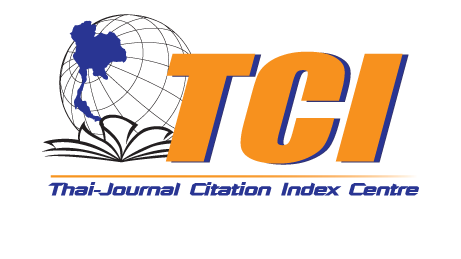The Two Khruba Lue: Buddhist Place Makers of the Upper Mekong
Abstract
Since the 1980s, the mobility of people in the borderlands of the upper Mekong region has been reactivated, simultaneously regulated by the state’s changing policy on borders and regional development. This paper traces the respective life stories of two charismatic Lue monks, Phra Khru Weruwanpithak, or ‘Khruba Khuen Kham’ (1929-2005), and Chao Khun Phra Rathanarangsri, or ‘Khruba Saeng Lha’ (1928-), and their Buddhist practices across borders, showing their religious journeys from the early 1980s to the beginning of the 21st century; this led these two Khruba Lue to play a significant part in Theravada revivalism in northern Thailand, the eastern Shan state of Myanmar, and in Sipsong Panna of south-west China. These activities not only restored Theravada Buddhist sites and developed extensive and influential networks among Buddhist monks and laities across borders, but also created a new sense of belonging among the Lue, who have long lived across national borders in the upper Mekong region.
References
Cohen, Paul T. 1998. Lue Ethnicity in National Context: A Comparative Study of Tai Lue Communities in Thailand and Laos. Journal of the Siam Society 86: 49-61.
____. 2000a. Lue across Borders: Pilgrimage and the Muang Sing Reliquary in Northern Laos. In Where China Meets Southeast Asia, edited by Grant Evans, Christopher Hutton, and Kuah Khun Eng, Singapore: Institute of Southeast Asian Studies, pp. 145-161.
____. 2000b. A Buddha Kingdom in the Golden Triangle: Buddhist Revivalism and the Charismatic Monk Khruba Bunchum. The Australian Journal of Anthropology 11, 2: 141-154.
____. 2001. Buddhism Unshackled: The Yuan ‘Holy Man’ Tradition and the Nation-State in the Tai World. Journal of Southeast Asian Studies 32, 2: 227-247.
____. 2002 The Lue Diaspora. paper presented at the 8th international conference on Thai Studies, Nakhon Phanom, Thailand, 9-12 January 2002.
____. 2017. Charismatic Monks of Lanna Buddhism. Copenhagen: NIAS Press and Chaing Mai: Silkworm Books.
Condominas, George. 1987. In Search of a Vat: The Dai in Internal and the Lao in External Exile. Proceedings of the International Conference on Thai Studies. The Australian National University, Canberra, 3-6 July, 1987, Volume 3: Part Two, compiled by Ann Buller, Canberra, ANU, pp. 445-466.
Connerton, Paul. 1989. How Societies Remember. Cambridge University Press.
Davis, Richard. 1984. Muang Metaphysics. Bangkok: Pandora.
Davis, Sara. 2003. Premodern Flows in Postmodern China: Globalization and the Sipsongpanna Tais. Modern China 29, 2: 176-203.
Evans, Grant, Christopher Hutton, and Kuah Khun Eng, ed. 2000. Where China Meets Southeast Asia. Singapore: Institute of Southeast Asian Studies.
Grabowsky, Volker. 1999. Forced Resettlement Campaigns in Northern Thailand During the Early Bangkok Period. Journal of the Siam Society 87: 45-86.
Keyes, Charles F. 1971. Buddhism and Nation Integration in Thailand. Journal of Asian Studies 30, 3: 551-567.
____. 1975. Buddhist Pilgrimage Centers and the Twelve-Year Cycle: Northern Thai Moral Orders in Space and Time. History of Religions 15, 1: 71-89.
____. 1977. Millennialism, Theravada Buddhism, and Thai Society. Journal of Asian Studies 36, 2: 283-302.
____. 1982. The Death of Two Buddhist Saints. Journal of the American Academy of Religion, Thematic Studies 4: 3-4.
____. 1992. Who are the Lue Revisited? Ethnic Identity in Laos, Thailand, and China. Working Paper, Centre for International Studies. Cambridge: MIT.
Moerman, Michael. 1965. Ethnic Identification in a Complex Civilization: Who are the Lue? American Anthropologist 67, 5 (Part 1): 1215-1230.
Pruess, James B. 1976. Merit-seeking in Public: Buddhist Pilgrimage in Northeastern Thailand. Journal of the Siam Society 64: 169-206.
Sopa Chanamun. 1991. Khruba Sriwichai: Ton Bun Haeng Lan Na. MA thesis, Faculty of Arts, Thammasat University. [in Thai]
Swearer, Donald. 2009. The Buddhist World of Southeast Asia. Chiang Mai: Silkworm Books.
Swearer, Donald K. and Sommai Premchit. 1978. The Relation between the Religious and Political Orders in Northern Thailand. In Religion and Legitimation of Power in Thailand, Laos, and Burma, edited by Bardwell L. Smith, Chambersburg Pa: Anima Books, pp. 20-33.
Tambiah, Stanley J. 1984. The Buddhist Saints of the Forest and the Cult of Amulets. Cambridge: Cambridge University Press.
Tanabe, Shigeharu and Charles F. Keyes. 2002. Cultural Crisis and Social Memory. London: Routledge & Curzon.
Tiyavanich, Kamala. 1997. Forest Recollection. Chiang Mai: Silkworm Books.
____. 2003. Buddha In The Jungle. Chiang Mai: Silkworm Books.
Turton, Andrew. 2000. Civility and Savagery. Richmond, Surrey: Curzon.
____. 2006. Remembering local history: Khruba Wajiraphanya (c.1853-1928), Phra Thongthip and the Muang Way of Life. Journal of the Siam Society 94: 147-176.
Wasan Panyagaew. 2008. Moving Dai: The Stories of A Minority Band from the Upper Mekong. In Challenging The Limits, edited by Prasit Leepreecha, Don McCaskill, and Kwanchewan Buadaeng, Chiang Mai: Mekong Press, pp. 307-329.
____. 2010. Cross-Border Journeys and Minority Monks: The Making of Buddhist Places in Southwest China. Asian Ethnicity 11,10: 43-59.
____. 2014. Remembering with Respect: History, Social Memory and the Cross-Border Journeys of a Charismatic Lue Monk. In Religion and Mobility in a Globalising Asia: New Ethnographic Explorations, edited by Sin Wen Lau and Nanlai Cao, London: Routledge.
Wijeyewardene, Gehan. 1993. Ethnicity and Nation: The Tai in Burma, Thailand and China (Sipsong Panna and Dehong). Paper presented at the 5th International Conference on Thai Studies, SOAS, London.


